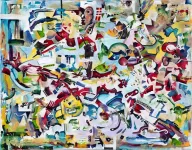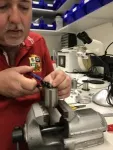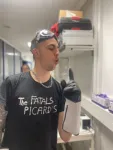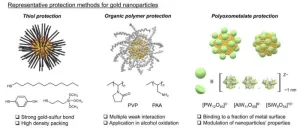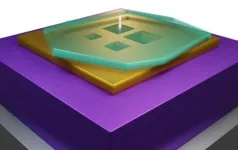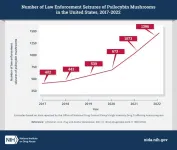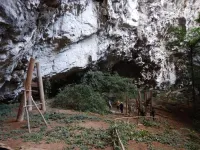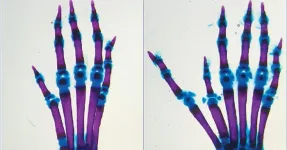(Press-News.org) The city you live in could be making you, your family, and your friends more unconsciously racist. Or, your city might make you less racist. It depends on how populous, diverse, and segregated your city is, according to a new study that brings together the math of cities with the psychology of how individuals develop unconscious racial biases.
The study, published in the latest issue of Nature Communications, presents data and a mathematical model of exposure and adaptation in social networks that can help explain why there is more unconscious, or implicit, racial bias in some cities than others. The authors hope that local communities and governments can use the findings to help create more just and equitable cities.
“What I think is most interesting is the implication that there’s a piece of systemic racism that has to do with how people learn and the way cities are organized,” says psychologist Andrew Stier, an SFI Complexity Postdoctoral Fellow and lead author of the study.
Cities create dense networks of social interaction between people. Because of the interactions with many different people, we need to be constantly adapting to new situations and learning, explains SFI External Professor Luís Bettencourt(University of Chicago), a co-leader of SFI’s Cities, Scaling and Sustainability project and co-author of the study.
To see how racial biases emerge from how U.S. cities are organized, Stier turned to the enormous database of the Implicit Association Test (IAT). In the popular online test, volunteer participants are given a pairing of White or Black faces with positive or negative words and asked to categorize a single face or word. If they are faster to categorize things when White/good are paired they have a White-good bias and if they are faster to categorize things when Black/good are paired they have a Black-good bias.
“People may feel they are not prejudiced, but can unconsciously have a preference for one group or another, and this is revealed by these tests,” Stier says.
The researchers took the average IAT bias scores from approximately 2.7 million individuals in different geographic areas and linked them to racial demographics and population data from the U.S. Census to build a model that accounts for how individuals learn biases through their social networks. They found that when these networks are larger, more diverse, and less segregated in cities, implicit racial biases decrease.
The results suggest that there are structural reasons why cities help or deter people from becoming less racially biased. Perhaps the most pronounced reason is the segregation of different racial groups into different neighborhoods. Related to that is the lack of more cosmopolitan public spaces where a diverse range of people can experience positive interactions with one another.
In cities where people can’t encounter and interact with people and institutions used by other groups, racial biases create major barriers to equity. These barriers are associated with disparities across essentially all aspects of life including medical care, education, employment, policing, mental health outcomes, and physical health, the authors explain.
END
How a city is organized can create less-biased citizens
2024-02-06
ELSE PRESS RELEASES FROM THIS DATE:
Reversible deformation, permanent fabric development
2024-02-06
6 February 2024
The Geological Society of America
Release No. 24-01
Contributed by Arianna Soldati, GSA Science Communication Fellow
Boulder, Colo., USA: Earth is a stressed planet. As plates move, magma rises, and glaciers melt—just to mention a few scenarios—rocks are subject to varying pressure and compressional and extensional forces. The effect of these stresses on rock mineralogy and texture is of great interest to the tectono-metamorphic community. Yet the link between process and outcome remains elusive.
There are two possible states of stress: either all principal ...
Researchers strike gold with improved catalyst
2024-02-06
For the first time, researchers including those at the University of Tokyo discovered a way to improve the durability of gold catalysts by creating a protective layer of metal oxide clusters. The enhanced gold catalysts can withstand a greater range of physical environments compared to unprotected equivalent materials. This could increase their range of possible applications, as well as reduce energy consumption and costs in some situations. These catalysts are widely used throughout industrial settings, including chemical synthesis and production of medicines, these industries could benefit from improved gold catalysts.
Everybody loves gold: athletes, pirates, bankers — everybody. ...
Breaking boundaries in quantum photonics: Groundbreaking nanocavities unlock new frontiers in light confinement
2024-02-06
In a significant leap forward for quantum nanophotonics, a team of European and Israeli physicists, introduces a new type of polaritonic cavities and redefines the limits of light confinement. This pioneering work, detailed in a study published today in Nature Materials, demonstrates an unconventional method to confine photons, overcoming the traditional limitations in nanophotonics.
Physicists have long been seeking ways to force photons into increasingly small volumes. The natural length scale of the photon is the wavelength and when a photon is forced into a cavity much smaller than ...
New cell therapy shows promise with ARDS patients
2024-02-06
Promising trial results indicate that a new type of cell therapy could improve the prognosis of those who are critically ill with acute respiratory distress syndrome (ARDS) resulting from severe Covid-19.
Published in the journal Nature Communications, Professor Justin Stebbing of Anglia Ruskin University (ARU) is the joint senior author of the new study investigating the use of agenT-797, MiNK Therapeutic’s allogeneic, unmodified invariant natural killer T (iNKT) cell therapy.
The iNKT cell therapy has the effect of rescuing exhausted T cells and prompting an anti-inflammatory cytokine response, potentially activating anti-viral immunity to ...
Law enforcement seizures of psilocybin mushrooms rose dramatically between 2017-2022
2024-02-06
Law enforcement seizures of “magic mushrooms” or “shrooms” containing the psychoactive component psilocybin increased dramatically in the United States between January 2017 and December 2022, according to a new study funded by the National Institute on Drug Abuse, part of the National Institutes of Health. The number of law enforcement seizures increased from 402 seizures in 2017 to 1,396 in 2022. In addition, the total weight of psilocybin mushrooms seized by law enforcement increased ...
Police seizures of psychedelic drugs are soaring throughout the United States
2024-02-06
Seizures by law enforcement officials of psilocybin, a compound found in psychedelic mushrooms, have increased by 369% since 2017, a new study shows. The authors say their findings may signal growing availability and public awareness of the hallucinogenic drug, along with possible heightened risks associated with recreational and unsupervised use of the drug.
The study was led by researchers at NYU Grossman School of Medicine and other members of the National Drug Early Warning System, an organization that conducts surveillance of shifting drug trends. Their analysis of national and state-level trafficking data ...
Thailand’s Iron Age Log Coffin culture
2024-02-06
Decidious and evergreen forests dominate the limestone karst formations of the northwestern highlands of Thailand. A vast number of caves and rock shelters intersperses the mountains. In over 40 such caves in Mae Hong Son province, large wooden coffins mounted on stilts, dating between 2,300 and 1,000 years ago, can be found. During the Iron Age period, each of these up to several-meter-long coffins was crafted from a single teak tree and features refined carvings of geometric, animal- or human-like shapes at the handles ...
Mobile patient lifts help ICU patients recover
2024-02-06
Tokyo, Japan – A recent randomized controlled trial in Tokyo, Japan, has unveiled the positive impact of early mobilization, assisted by mobile patient lifts, on the recovery of ventilated intensive care unit (ICU) patients. The debate surrounding the efficacy of early mobilization in ICU has persisted for an extended period.
The treatment of critically ill patients in ICUs, often involving prolonged limb immobilization or restricted mobility, is acknowledged as a risk factor for diminished physical strength and diminished quality of life post-recovery, ...
Re-excision rates after breast-conserving surgery pose ongoing challenges in the US: UTHealth Houston study unveils high reoperation rates and costs
2024-02-06
Rates of re-excision after initial breast-conserving surgery in women with breast cancer remain high across the United States, leading to an increased cost of care and a higher risk of postoperative complications, according to new research from UTHealth Houston.
The study, led by first author Youngran Kim, PhD, assistant professor; and senior author Trudy Krause, PhD, professor, was published today in Annals of Surgical Oncology. Both are with the Center for Health Care Data in the Department of Management, Policy ...
Extra fingers and hearts: pinpointing changes to our genetic instructions that disrupt development
2024-02-06
Our genomes provide the instructions for proper growth and development. Millions of genomic switches, known as enhancers, control the location and timing of gene expression, which in turn ensures the correct proteins are made in the right cells at the right time throughout our lives. New research from University of California San Diego Assistant Professor Emma Farley’s lab shows how we can now predict which single base-pair changes to the DNA within our genomes will alter these instructions and disrupt development, causing extra digits and hearts.
We now ...
